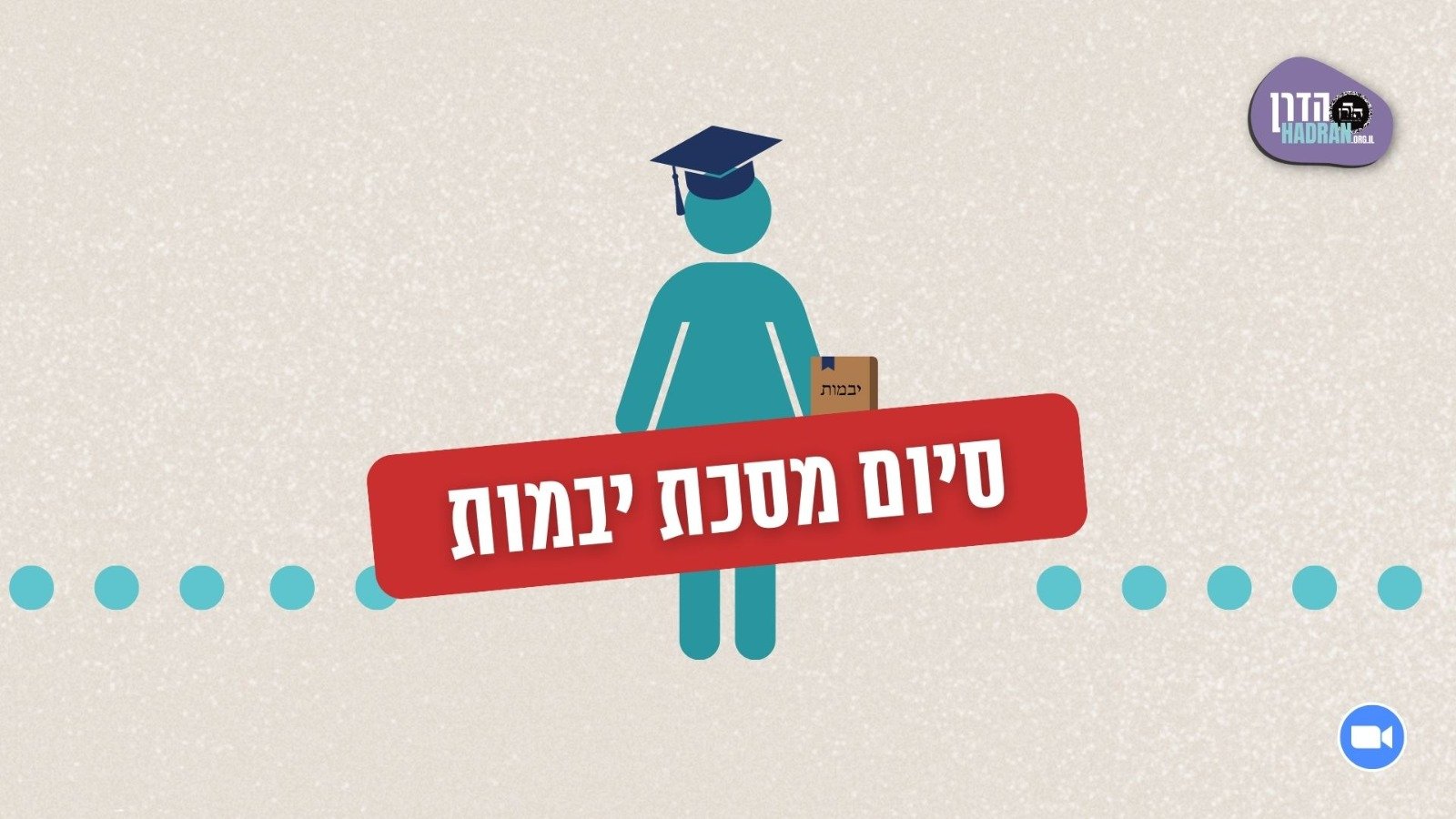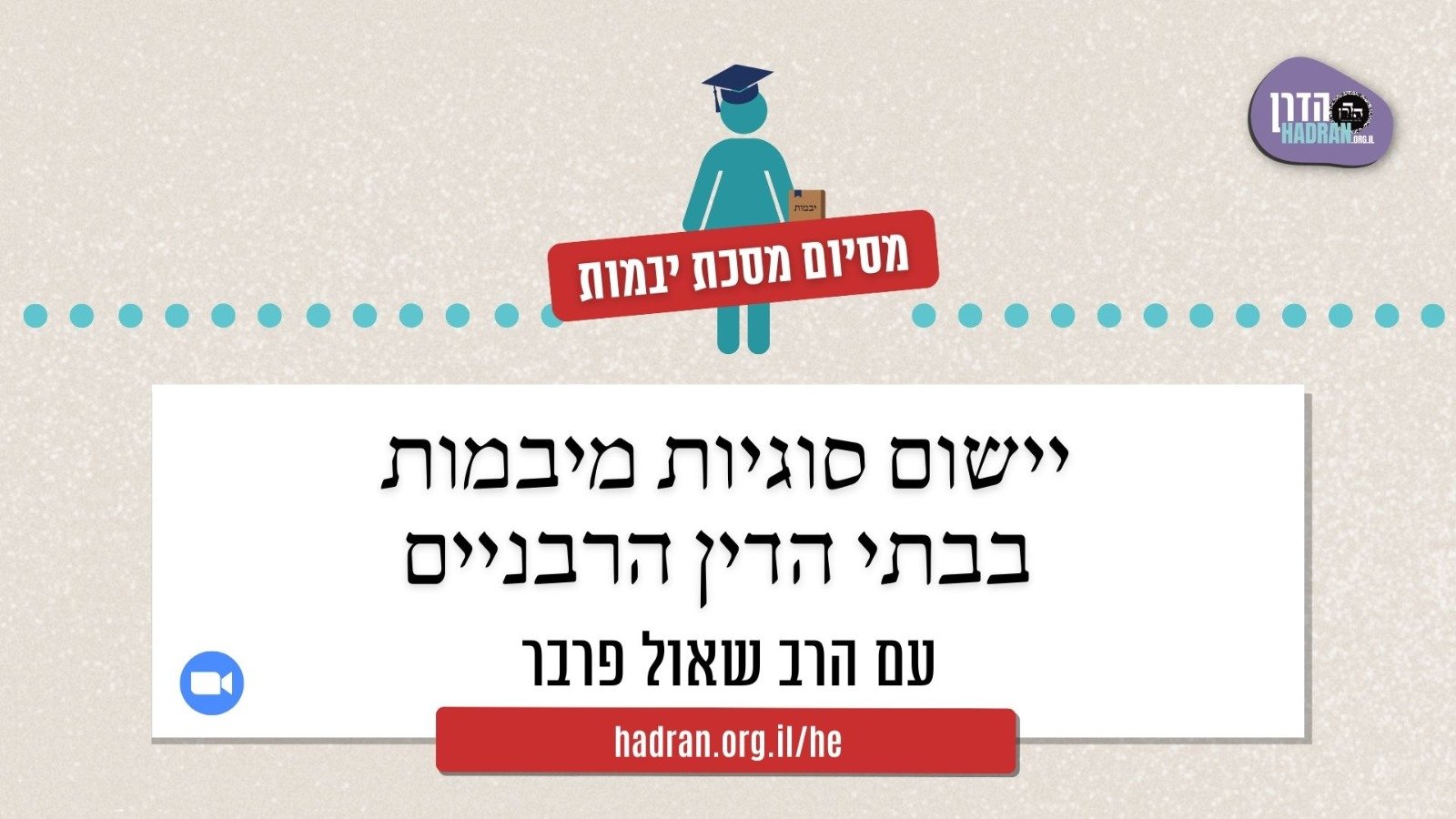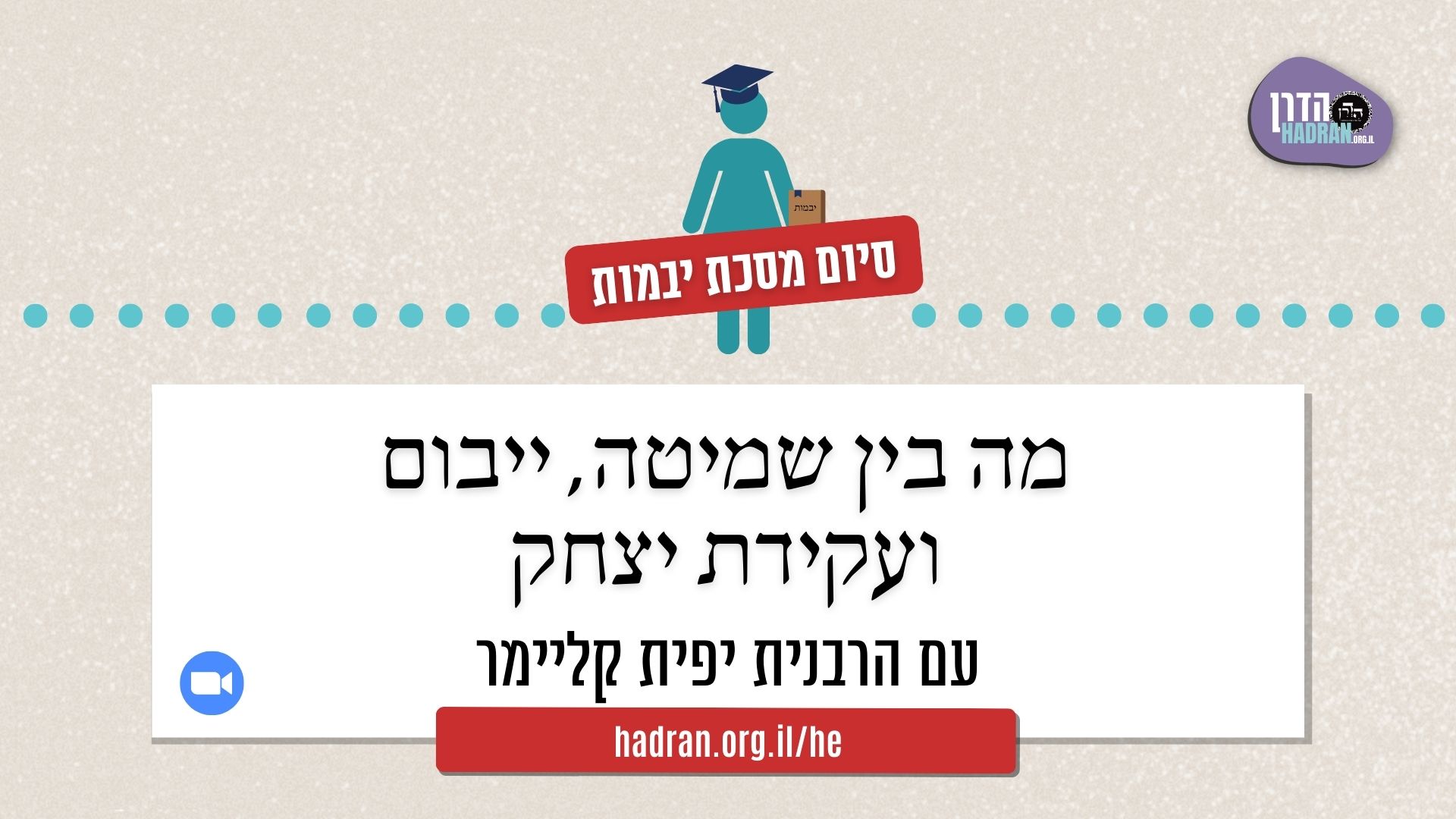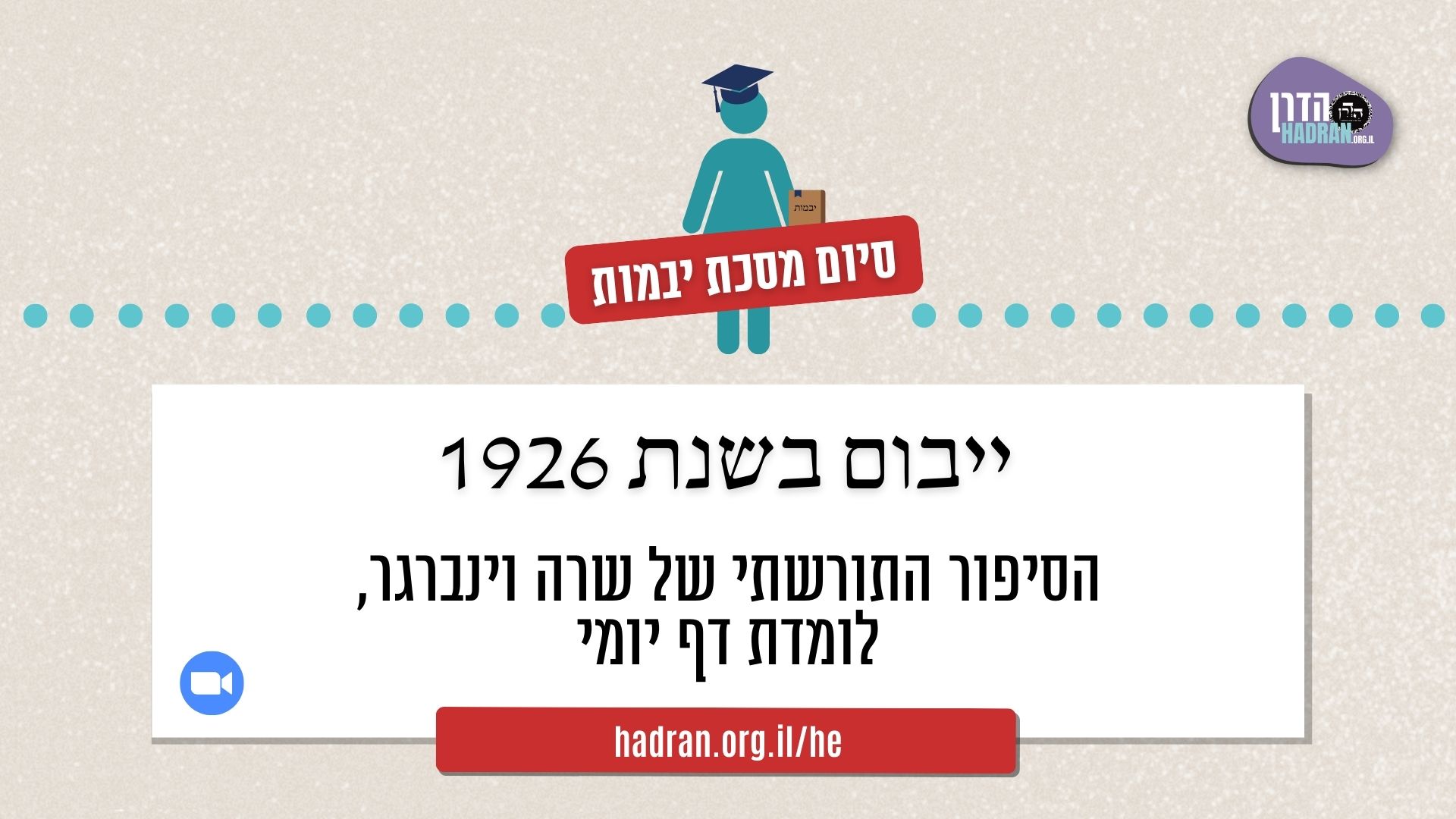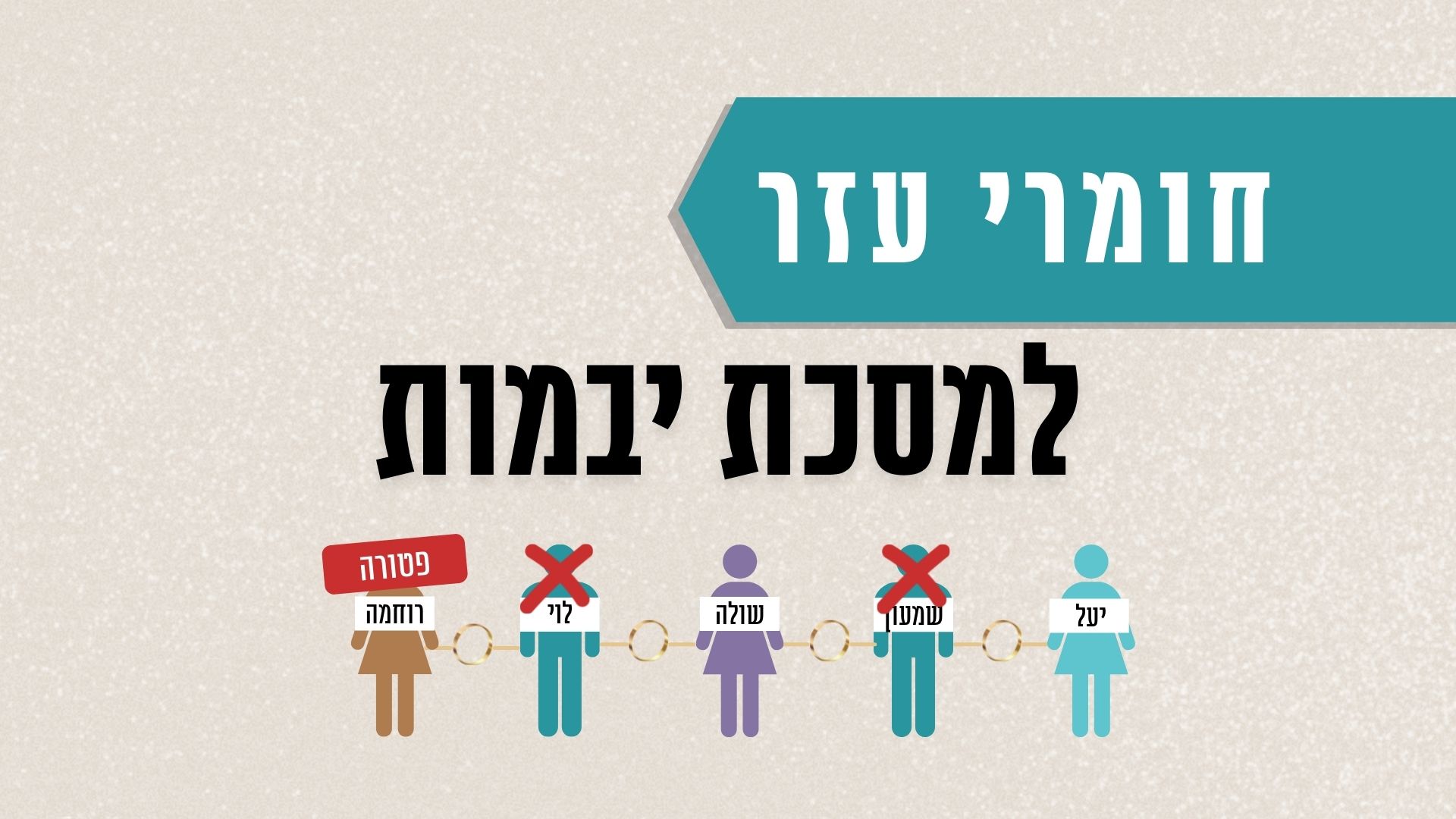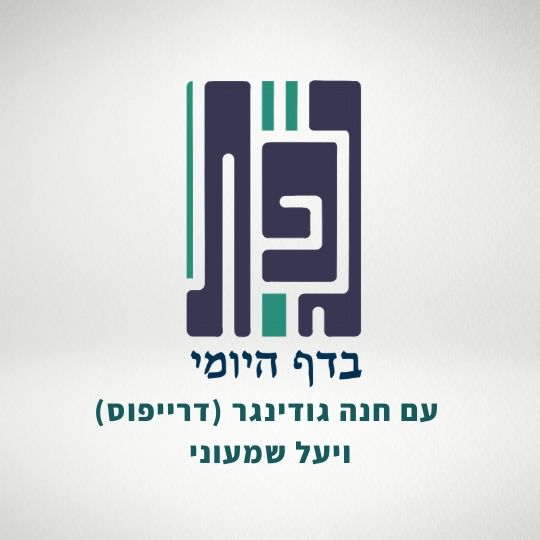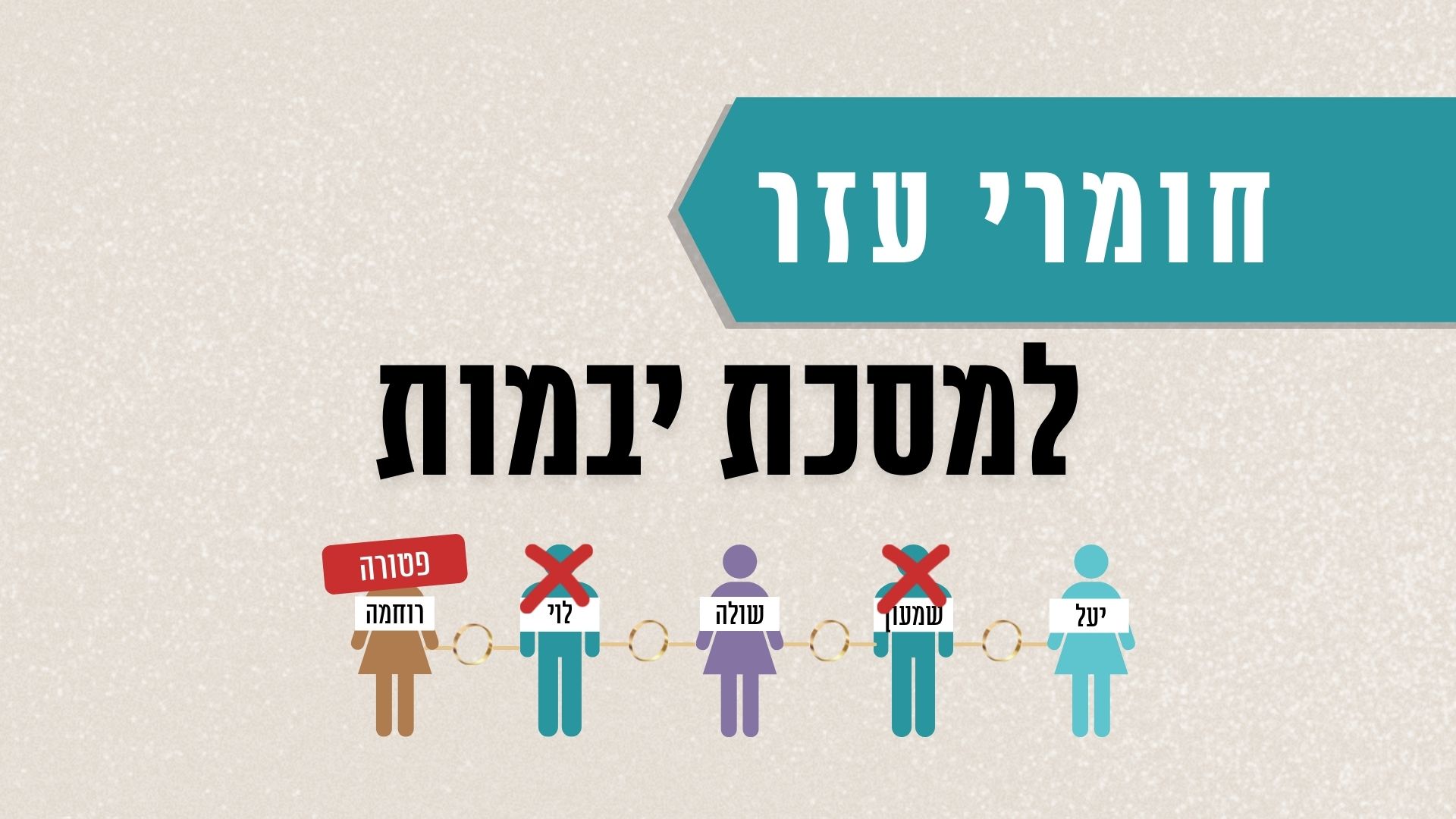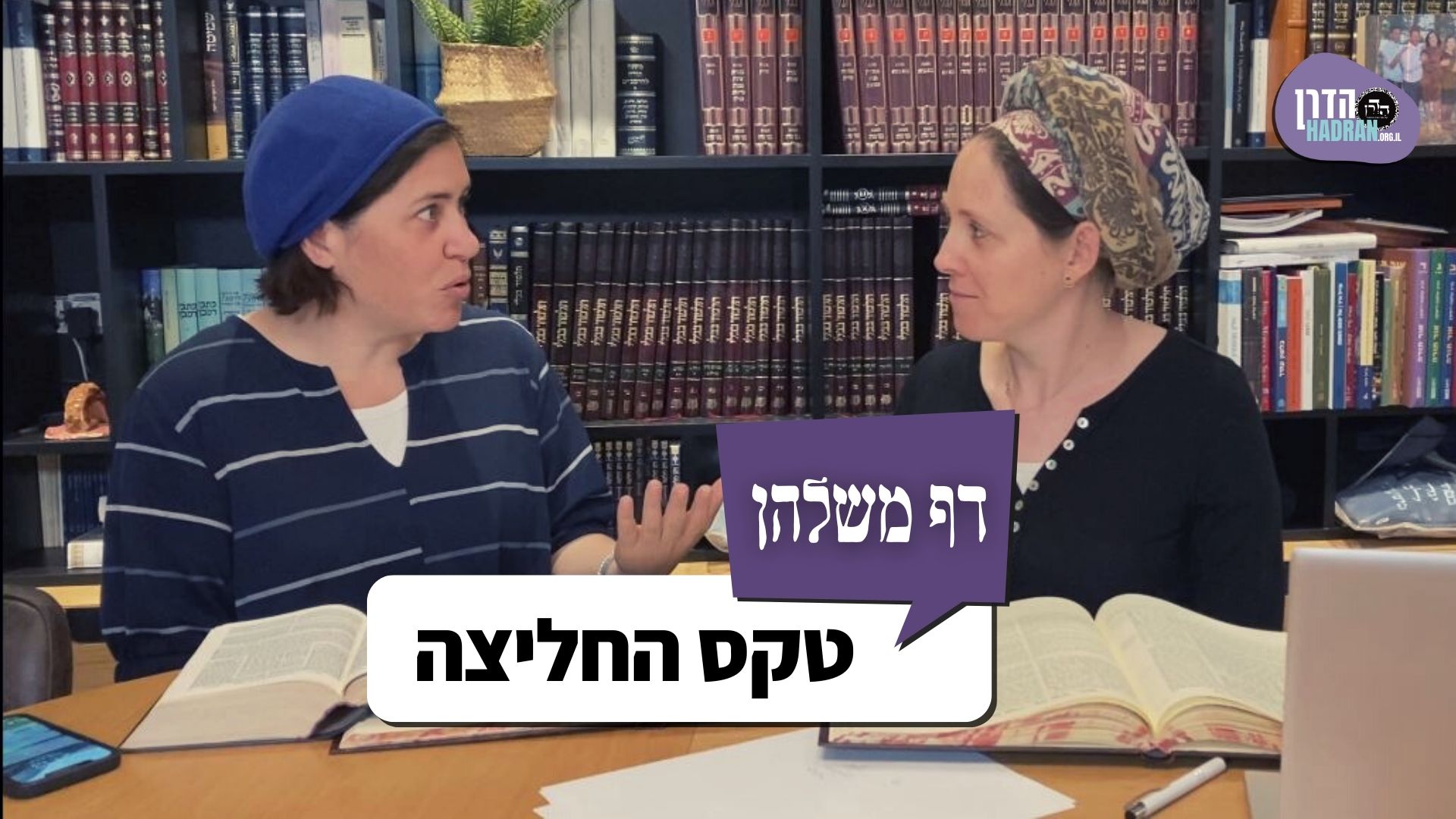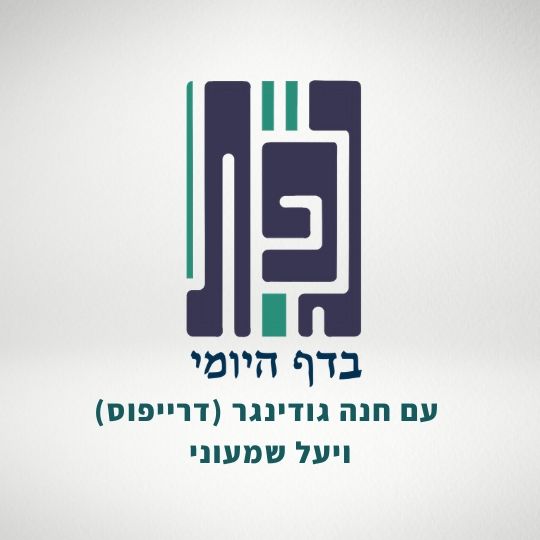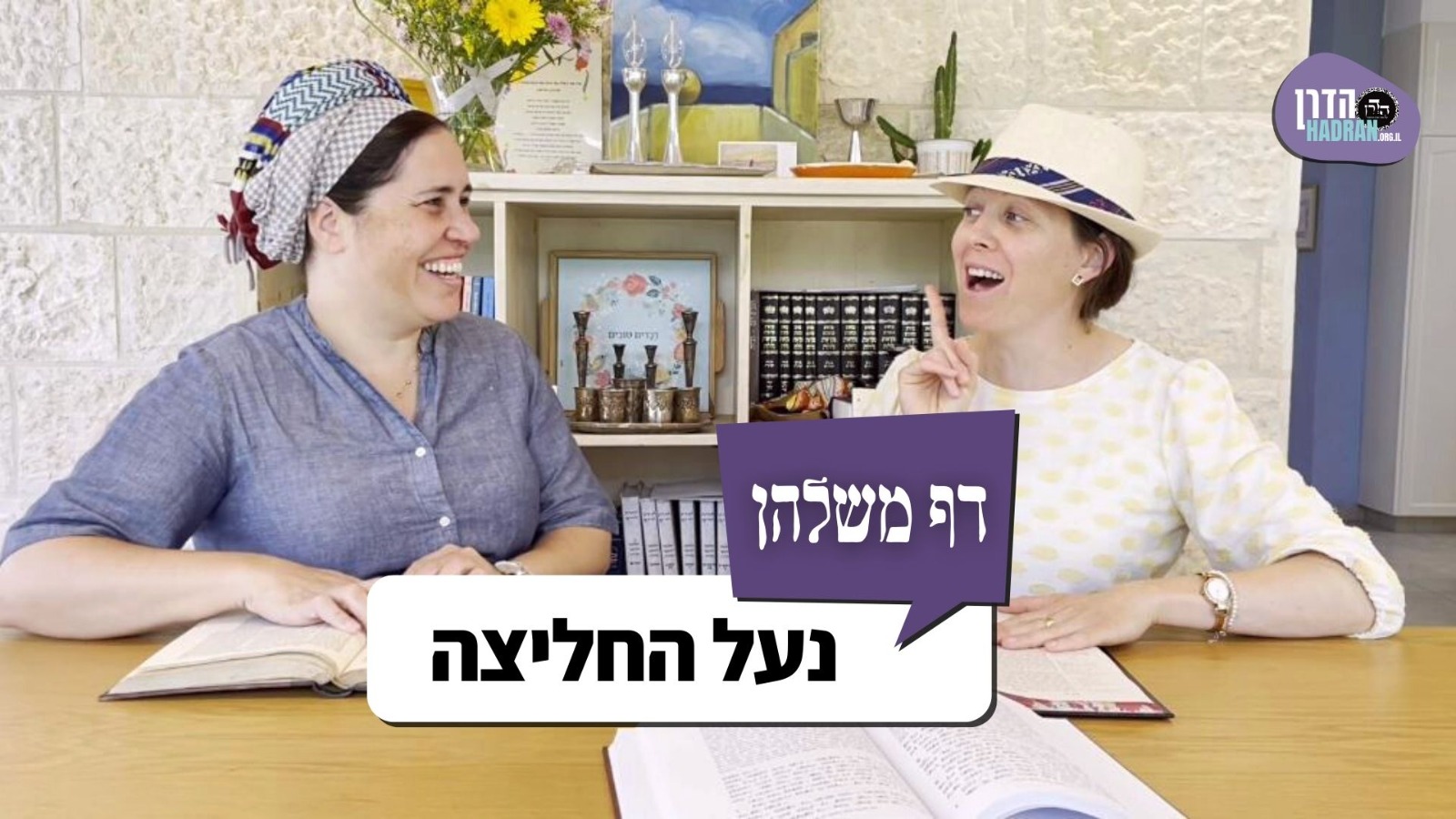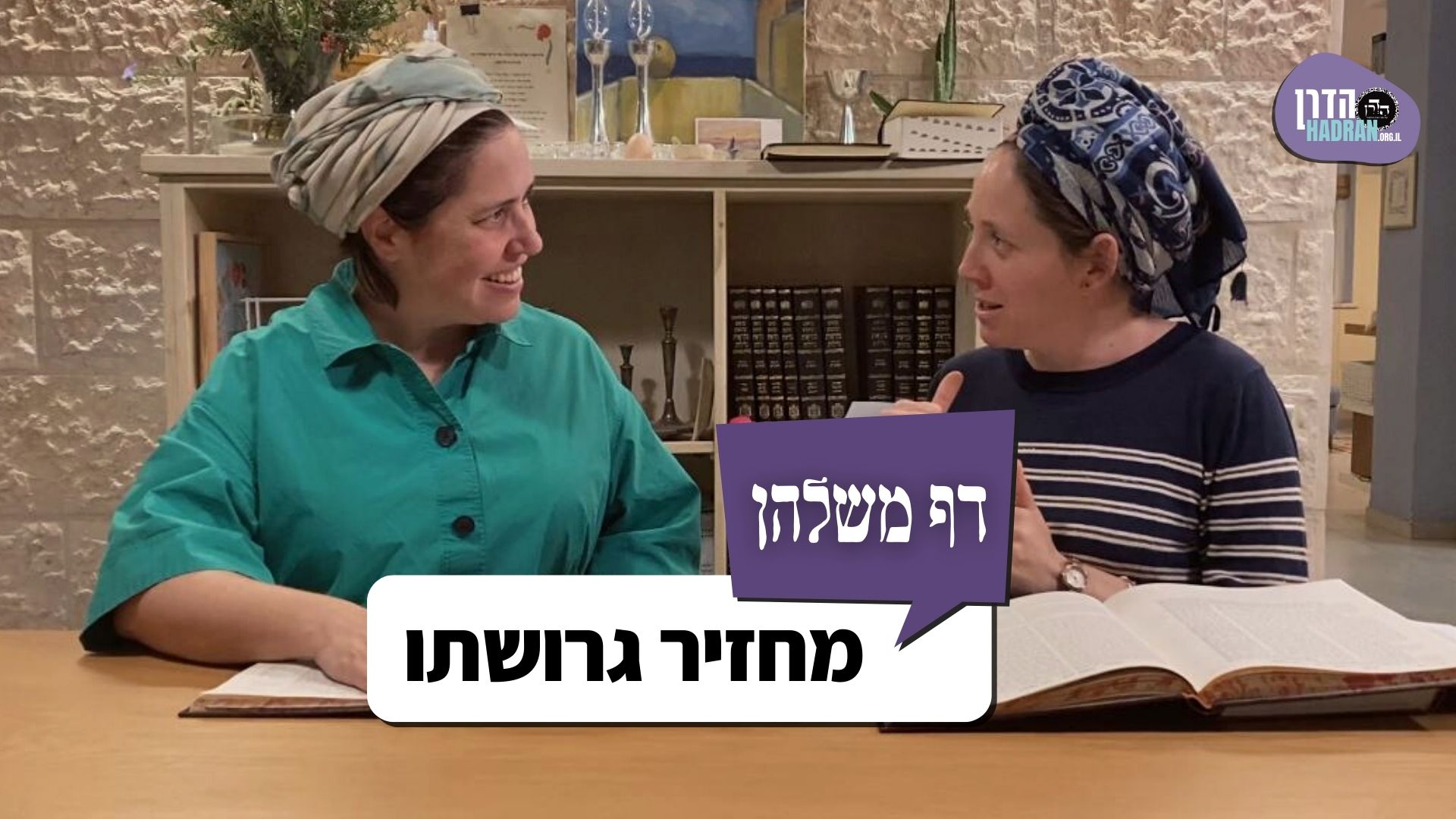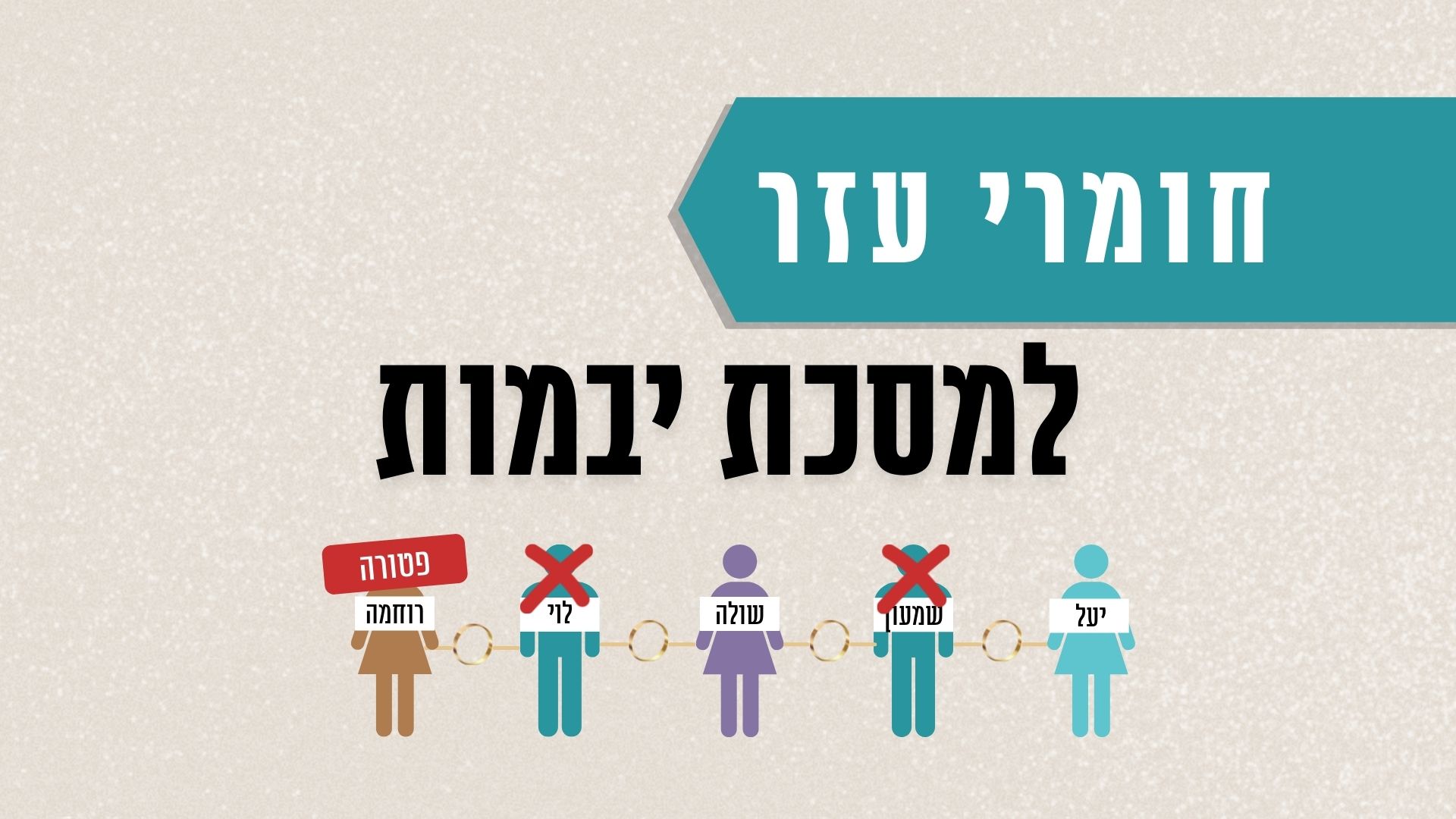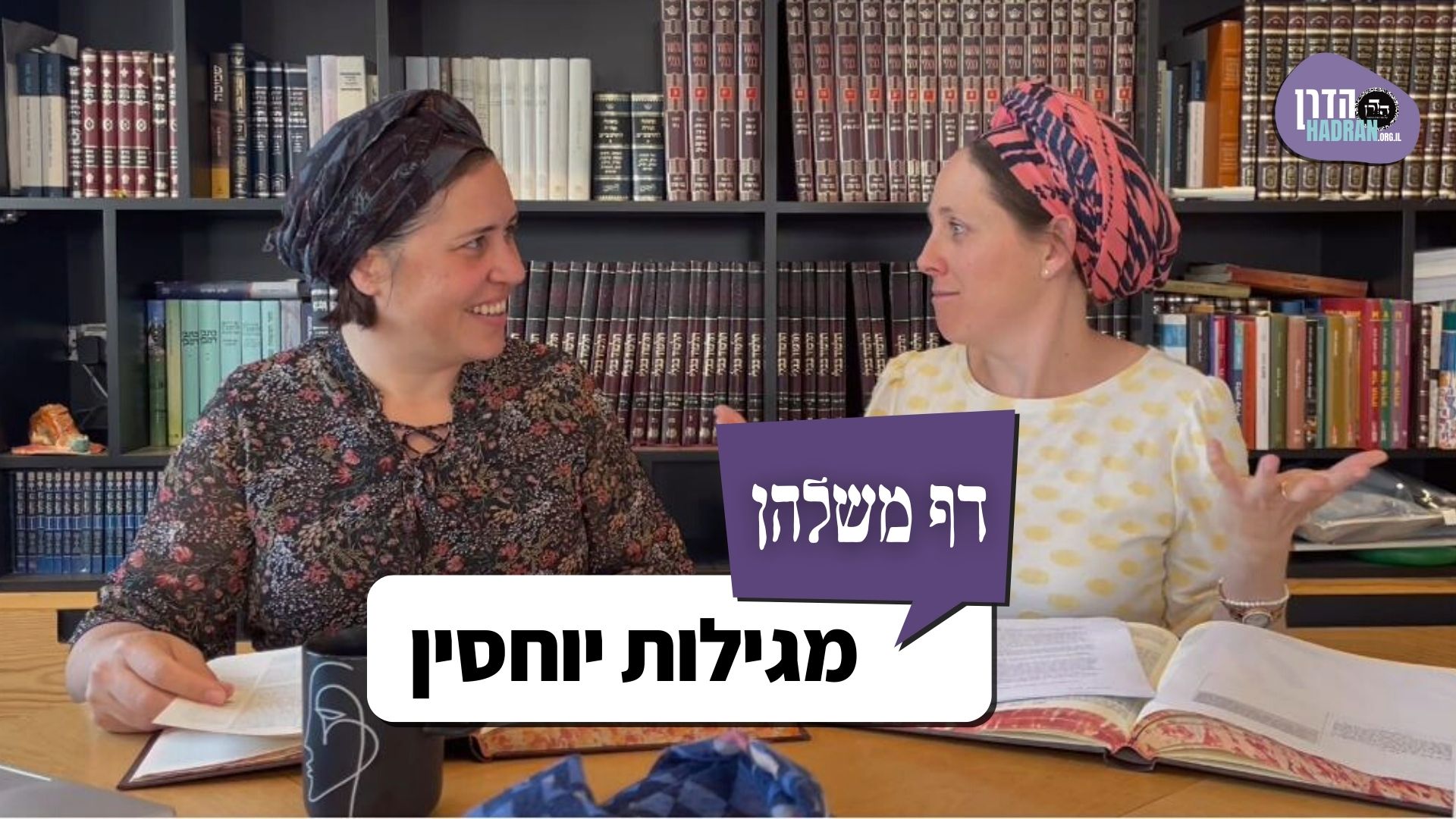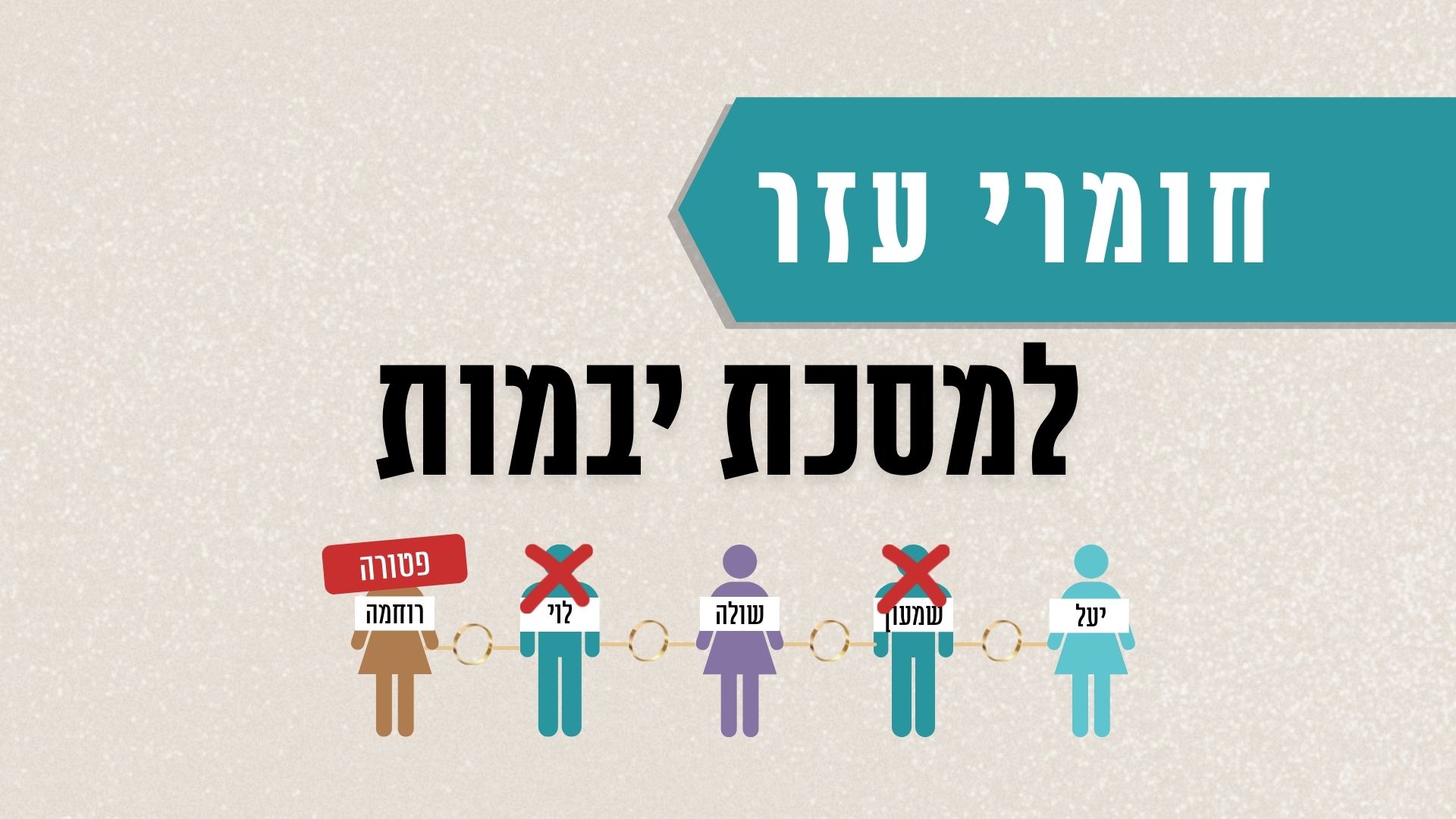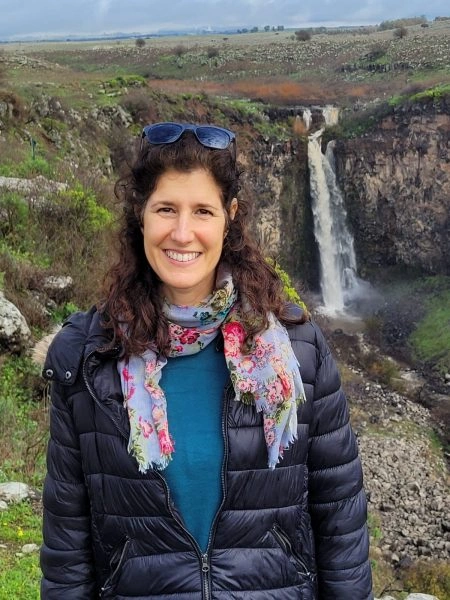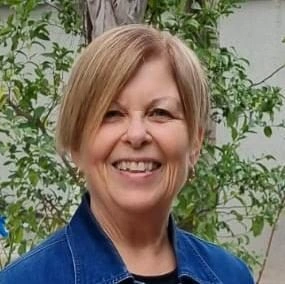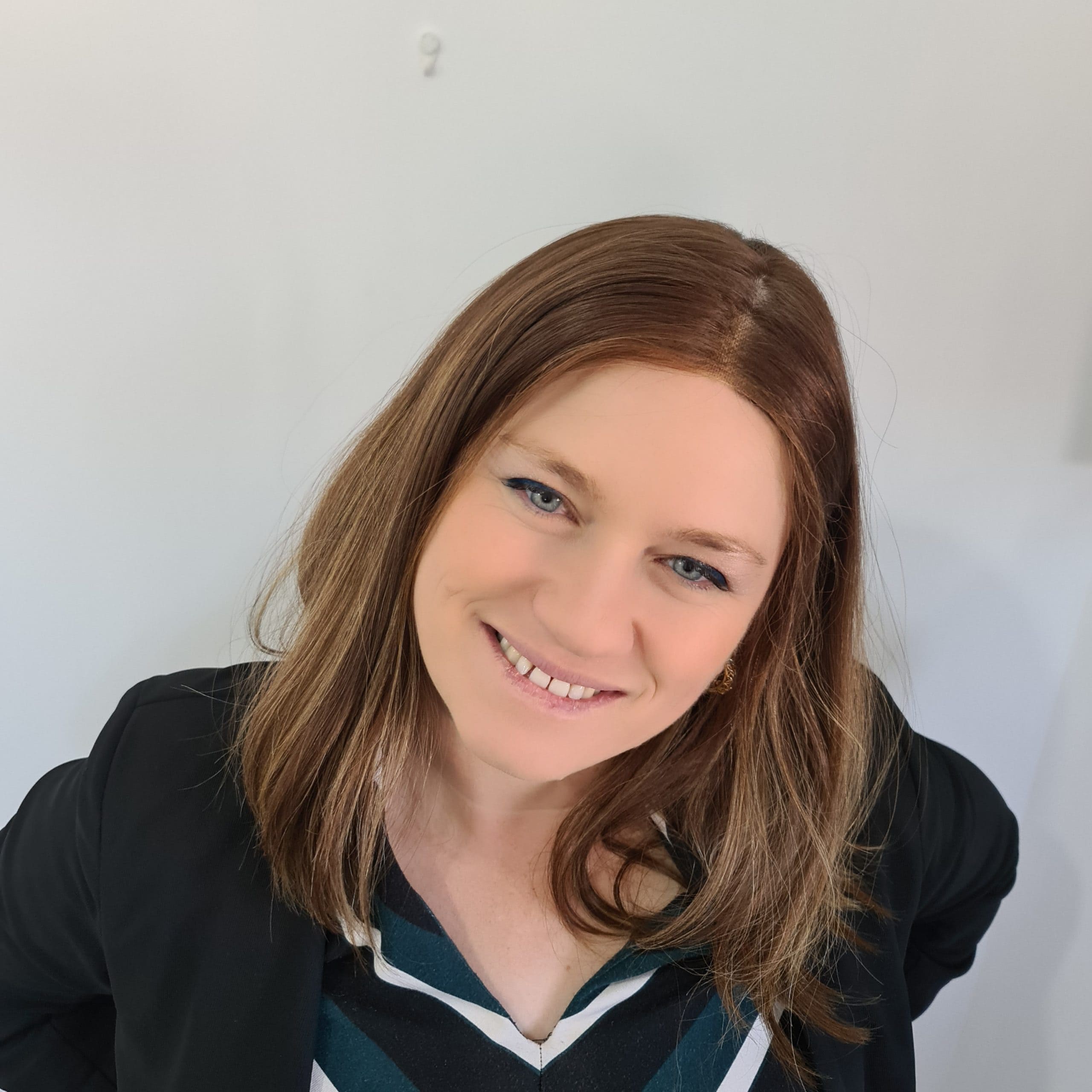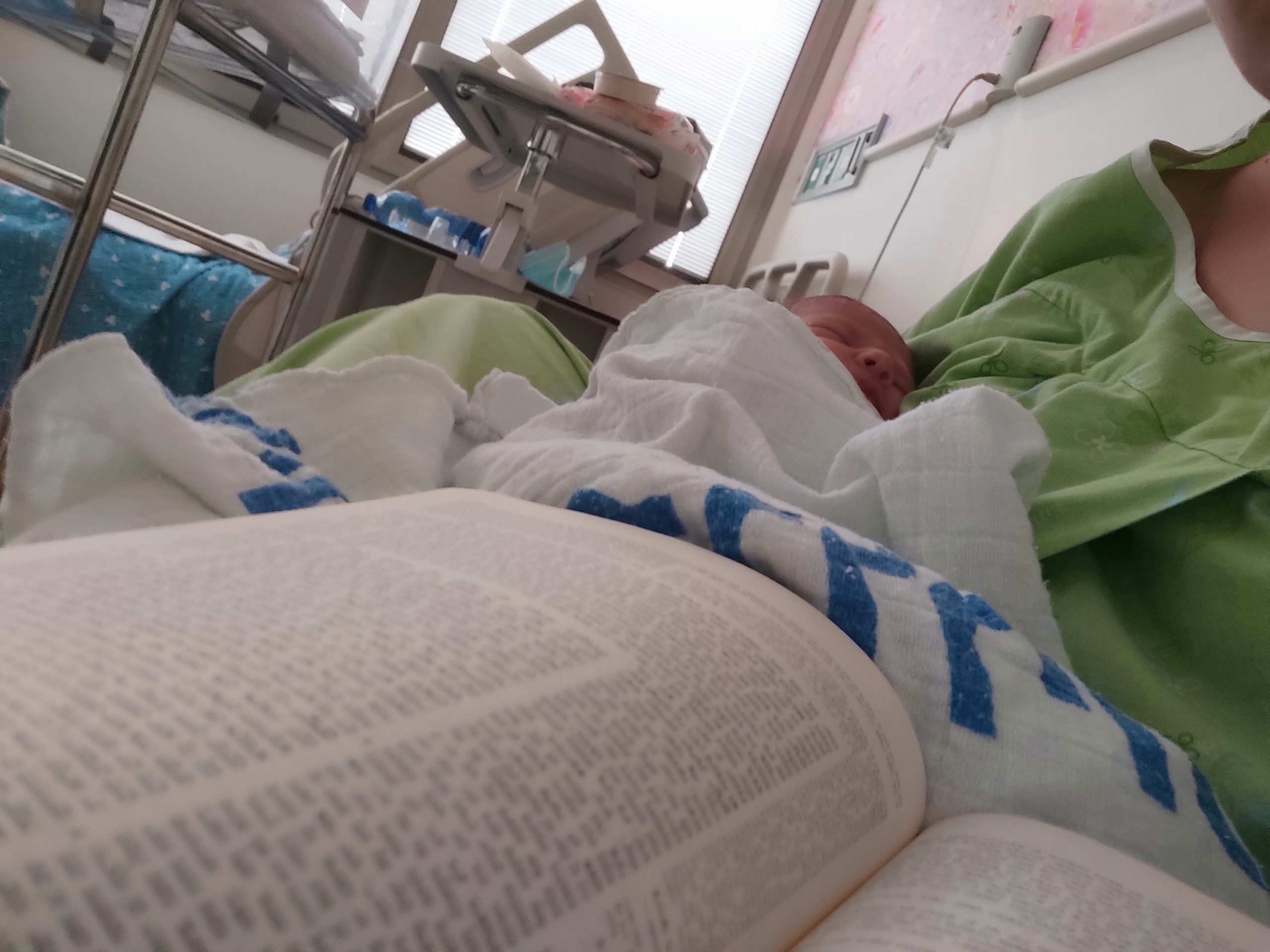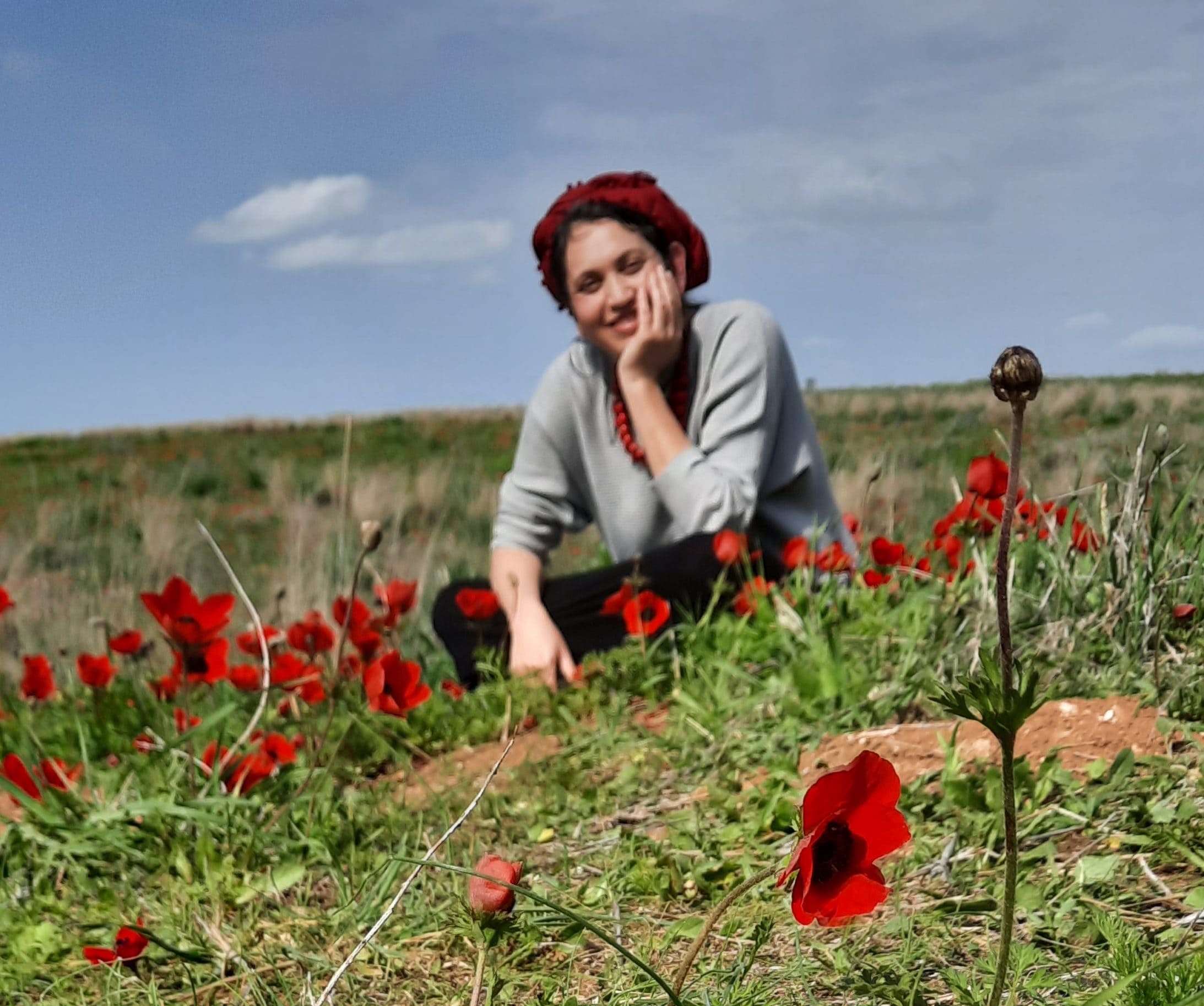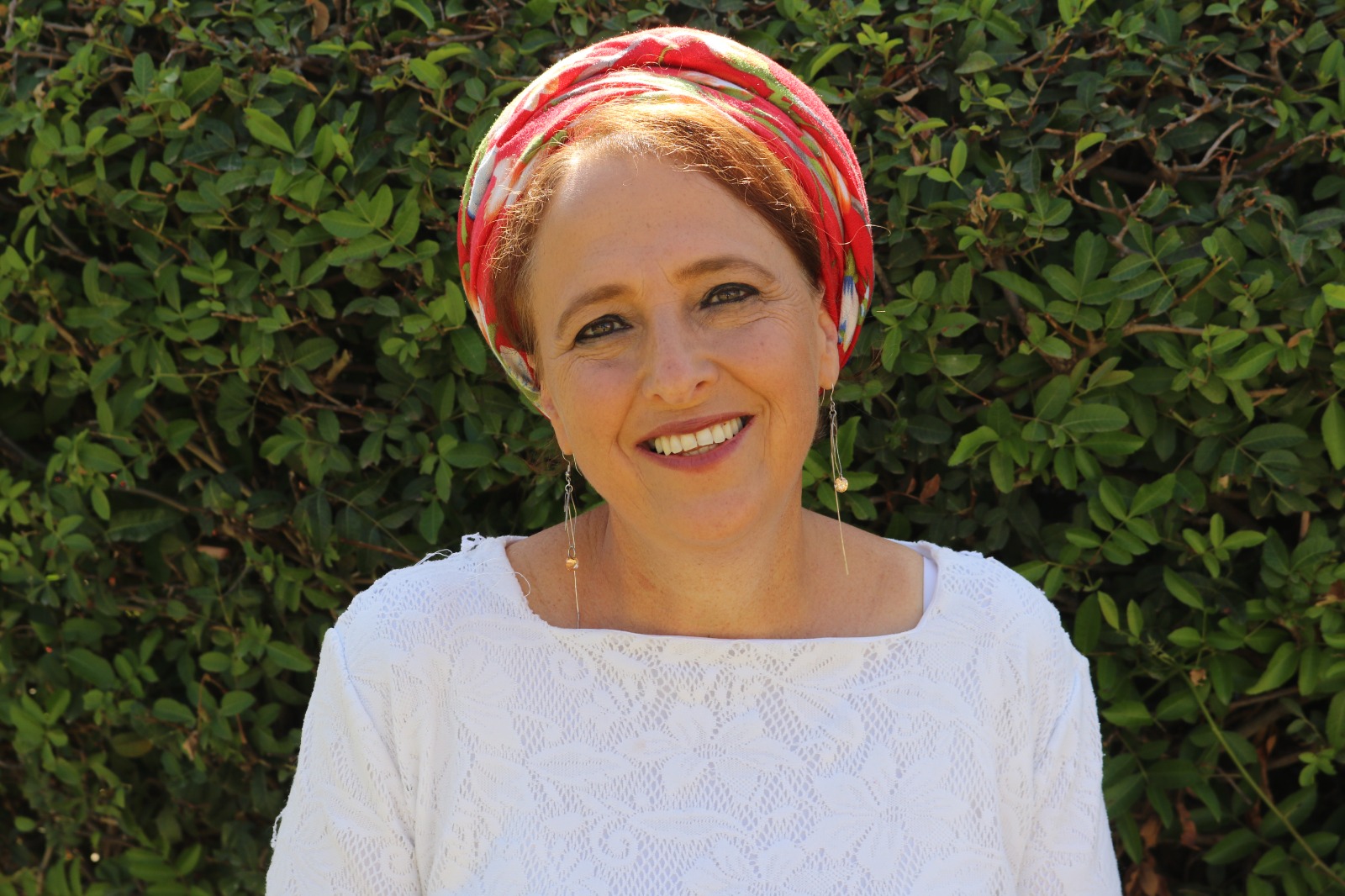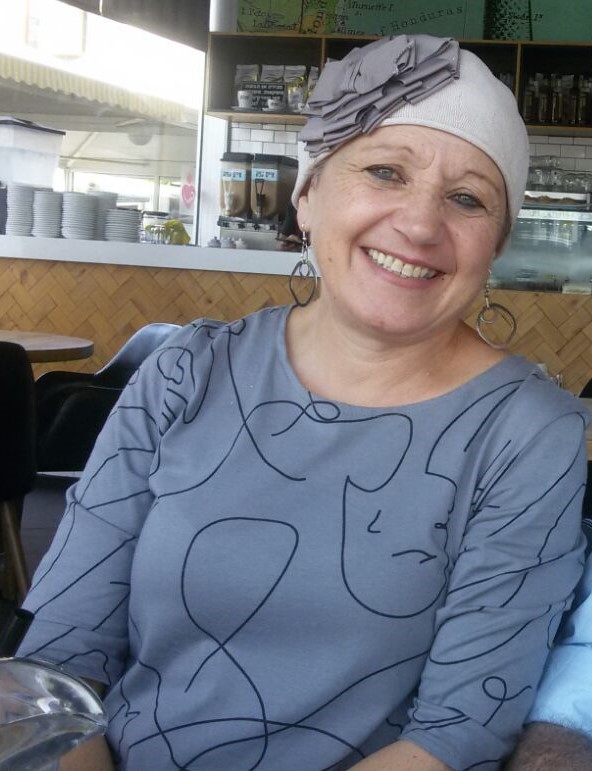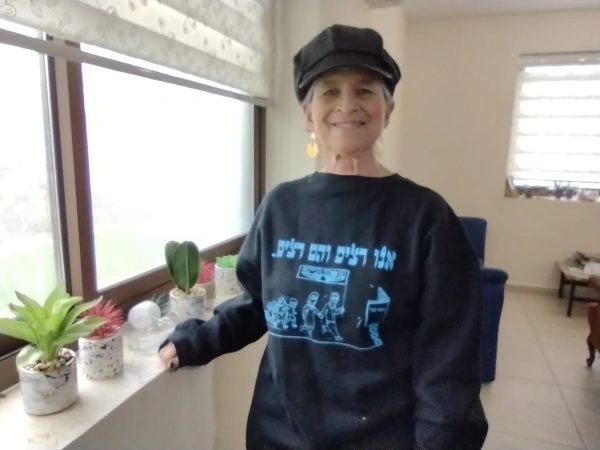יבמות קכ
לְאַנְסוֹבֵי לְצָרָה מִקַּמֵּי דִּידַהּ: אִי אָמְרַתְּ צָרָה מְעִידָה לַחֲבֶרְתָּהּ, אַף עַל גַּב דְּלָא אִינְּסִיב — מַנְסְבִינַן לַהּ לְצָרָה. אִי אָמְרַתְּ מִשּׁוּם דְּהִיא לָא מְקַלְקְלָא נַפְשַׁהּ, אִינְּסִיב — מַנְסְבִינַן לַהּ לְצָרָה, אִי לָא אִינְּסִיב — לָא מַנְסְבִינַן לַהּ.
The Gemara responds that Rabbi Elazar’s reasoning could make a practical difference with regard to allowing the rival wife to marry before the woman herself, i.e., the woman who testified that her husband died, remarries. If you say that according to Rabbi Elazar, one rival wife may testify for another, then although the woman who testified that her husband died has not married, we allow her rival wife to marry. Since the woman’s report is deemed credible with regard to herself, it is also deemed credible with regard to her rival wife. However, if you say that Rabbi Elazar’s reasoning is due to the presumption that she would not cause herself injury, then if she has actually married we may allow her rival wife to marry, but if she has not married, we may not allow her rival wife to marry, in case she lied in order to cause harm to her rival wife.
מַאי? תָּא שְׁמַע, רַבִּי אֶלְעָזָר אוֹמֵר: הוֹאִיל וְהוּתְּרוּ לַיְּבָמִין — הוּתְּרוּ לְכׇל אָדָם. אִי אָמְרַתְּ בִּשְׁלָמָא דְּהִיא לָא מְקַלְקְלָא נַפְשַׁהּ — הַיְינוּ דְּכִי אִינְּסִיב, מַנְסְבִינַן לַהּ,
What is the basis of Rabbi Elazar’s ruling? The Gemara suggests: Come and hear a resolution based upon the wording of the baraita itself: Rabbi Elazar says: Since they were permitted to marry the brothers-in-law, they are now permitted to marry any man. Granted, if you say that his reason is because she would not cause herself injury, this is the reason that if she has actually married, as in this case, where each woman entered into levirate marriage, we may allow her rival wife to marry.
אֶלָּא אִי אָמְרַתְּ מִשּׁוּם דְּצָרָה מְעִידָה לַחֲבֶרְתָּהּ — אַף עַל גַּב דְּלָא אִינְּסִיב נָמֵי! אֶלָּא שְׁמַע מִינַּהּ טַעְמָא דְּרַבִּי אֶלְעָזָר מִשּׁוּם דְּאִינְּסִיב הוּא, וְלָא מְקַלְקְלָא נַפְשַׁהּ.
But if you say the reason is because one rival wife may testify for another, then although she herself has not married, it should still be permitted for her rival wife to marry, and it would be unnecessary for Rabbi Elazar to state his opinion in a case where the women had already entered into levirate marriage. Rather, conclude from this that Rabbi Elazar’s reason is because she has already married, and she would not cause herself injury by marrying if her original husband had not died.
רַבִּי אֶלְעָזָר לְדִבְרֵיהֶם קָאָמַר לְהוּ: לְדִידִי, צָרָה מְעִידָה לַחֲבֶרְתָּהּ, וְאַף עַל גַּב דְּלָא אִינְּסִיב — מַנְסְבִינַן לַהּ. אֶלָּא לְדִידְכוּ, אוֹדוֹ לִי מִיהַת דְּהֵיכָא דְּאִינְּסִיב — מַנְסְבִינַן לַהּ, מִשּׁוּם דְּהִיא לָא מְקַלְקְלָא נַפְשַׁהּ. וְרַבָּנַן, ״תָּמוֹת נַפְשִׁי עִם פְּלִשְׁתִּים״ הוּא דְּקָעָבְדָה.
The Gemara rejects that and suggests that Rabbi Elazar stated his opinion to the Rabbis in accordance with their own statement, as follows: According to my own opinion, one rival wife may testify for another, and although she, herself, has not married, nevertheless we may allow her rival wife to marry. But even according to your own opinion, admit, in any event, that where she has actually married we may allow her rival wife to marry because she would not cause injury to herself. But the Rabbis, rejecting this, say that she acts upon the premise: “Let me die with the Philistines” (Judges 16:30), i.e., a woman may even harm herself by remarrying while her original husband is still alive, in order to harm her rival wife by causing her to remarry as well.
תָּא שְׁמַע: הָאִשָּׁה שֶׁהָלְכָה הִיא וּבַעְלָהּ לִמְדִינַת הַיָּם, וּבָאָה וְאָמְרָה: ״מֵת בַּעְלִי״ — תִּנָּשֵׂא וְתִטּוֹל כְּתוּבָּתָהּ, וְצָרָתָהּ אֲסוּרָה. רַבִּי אֶלְעָזָר אוֹמֵר: הוֹאִיל וְהוּתְּרָה הִיא — הוּתְּרָה נָמֵי צָרָתָהּ. אֵימָא: הוֹאִיל וְהוּתְּרָה וְנִשֵּׂאת.
The Gemara suggests another solution. Come and hear the following baraita: In the case of a woman who went with her husband to a country overseas, and who later came and said: My husband died, she is permitted to marry and collect the widow’s compensation from her marriage contract, but her rival wife is prohibited from doing so. Rabbi Elazar says: Since she is permitted to marry, her rival wife is also permitted. This indicates that Rabbi Elazar holds that the rival wife is permitted to marry because the wife who testified that her husband has died is permitted to do so, even if the latter has not actually remarried yet. The Gemara rejects this proof: Say that Rabbi Elazar means: Since she was permitted and has married.
וְלֵיחוּשׁ דִּלְמָא בְּגִיטָּא אֲתַאי, וְהַאי דְּקָאָמְרָה הָכִי — לְקַלְקוֹלַהּ לְצָרָה הִיא מִיכַּוְּונָה!
The Gemara asks: If Rabbi Elazar’s reason is that she would not cause herself injury, how can her rival wife be permitted to marry? Let us be concerned that perhaps she, i.e., the woman who claimed that the husband was dead, came with a bill of divorce and is therefore permitted to remarry though the husband is alive. And the fact that she says this, i.e., that her husband is dead, is intended only to injure her rival wife, who will remarry, thinking that the husband is dead, and will suffer the severe consequences of adultery.
אִי דְּאִינְּסִיב לְיִשְׂרָאֵל — הָכִי נָמֵי. הָכָא בְּמַאי עָסְקִינַן, דְּאִינְּסִיב לְכֹהֵן.
The Gemara then validates this concern. If she actually married an Israelite, which is permitted for a divorced woman, then indeed one must consider the possibility that she is actually divorced and not widowed, and the rival wife is not permitted to marry. However, here we are dealing with a case where she married a priest, who is prohibited from marrying a divorced woman, and therefore she must actually be a widow, as she would not damage herself by entering into a forbidden marriage.
מַתְנִי׳ אֵין מְעִידִין אֶלָּא עַל פַּרְצוּף פָּנִים עִם הַחוֹטֶם. אַף עַל פִּי שֶׁיֵּשׁ סִימָנִין בְּגוּפוֹ וּבְכֵלָיו — אֵין מְעִידִין אֶלָּא עַד שֶׁתֵּצֵא נַפְשׁוֹ. וַאֲפִילּוּ רָאוּהוּ מְגוּיָּיד וְצָלוּב וְהַחַיָּה אוֹכֶלֶת בּוֹ — אֵין מְעִידִין אֶלָּא עַד שְׁלֹשָׁה יָמִים.
MISHNA: One may testify that a man died only if he can testify about seeing the countenance [partzuf ] of the face with the nose, as this allows one to identify the individual with certainty. Although there are distinguishing marks [simanim] on his body and his personal belongings, which appear to indicate his identity, one may not rely on these as identification. Furthermore, one may not testify that a person died until his soul actually departs. And even if one saw him cut open and severely wounded, or crucified, or with a wild animal eating parts of him, he may not testify that he died. Additionally, one may testify to someone’s death only when the body was witnessed up to three days following death and not after that, since the appearance may change due to decomposition.
רַבִּי יְהוּדָה בֶּן בָּבָא אוֹמֵר: לֹא כׇּל הָאָדָם וְלֹא כׇּל הַמָּקוֹם וְלֹא כׇּל הַשָּׁעוֹת שָׁוִין.
Rabbi Yehuda ben Bava says: One cannot establish general guidelines for this matter because not every person, nor every place, nor every hour is identical. Decomposition is not uniform. It occurs at different rates in different situations.
גְּמָ׳ תָּנוּ רַבָּנַן: פַּדַּחַת וְלֹא פַּרְצוּף פָּנִים, פַּרְצוּף פָּנִים וְלֹא פַּדַּחַת — אֵין מְעִידִין, עַד שֶׁיְּהוּ שְׁנֵיהֶם עִם הַחוֹטֶם. אָמַר אַבָּיֵי, וְאִיתֵּימָא רַב כָּהֲנָא: מַאי קְרָא — ״הַכָּרַת פְּנֵיהֶם עָנְתָה בָּם״.
GEMARA: The Sages taught in a baraita: If the witnesses saw his forehead but not the countenance of the face, or if they saw the countenance of the face but not his forehead, they may not testify that it is he, until they see both of them with the nose. Abaye said, and some say it was Rav Kahana who said: What is the verse from which it is derived that one may testify that a man died only if one sees his face? The verse is: “The show of their face does witness against them” (Isaiah 3:9), which indicates that one clearly recognizes another only upon seeing his face.
אַבָּא בַּר מָרְתָא דְּהוּא אַבָּא בַּר מִנְיוֹמֵי הֲוָה מַסְּקִי בֵּיהּ דְּבֵי רֵישָׁא גָּלוּתָא זוּזֵי. אַיְיתִי קִירָא, דַּבֵּק בִּבְלִייתָא, דַּבֵּק בְּאַפּוּתֵיהּ. חֲלַף קַמַּיְיהוּ וְלָא בַּשְׁקְרוּהּ.
The Gemara relates that Abba bar Marta, who is also known as Abba bar Minyumi, had been loaned money by members of the Exilarch’s house. Since he did not want to be seen by these violent people, he brought wax [kira], stuck it to a strip of worn-out fabric, and stuck all of that to his forehead in order to alter his appearance. He passed before them and they did not recognize him [beshakru]. This shows how much a person’s face changes when the appearance of his forehead is altered.
אַף עַל פִּי שֶׁיֵּשׁ סִימָנִין וְכוּ׳. לְמֵימְרָא דְּסִימָנִין לָאו דְּאוֹרָיְיתָא.
§ We learned in the mishna that, although there are distinguishing marks on a dead person’s body and clothing, one may not rely on these as identification. The Gemara asks: Is this to say that distinguishing marks are not recognized as valid identification by Torah law, and while a rabbinic ordinance allows one to rely upon them to remedy certain situations, for testimony about a person’s death, the Sages require the stringencies of Torah law?
וּרְמִינְהִי: מְצָאוֹ קָשׁוּר בְּכִיס וּבְאַרְנָקִי וּבְטַבַּעַת, אוֹ שֶׁנִּמְצָא בֵּין כֵּלָיו, אֲפִילּוּ לִזְמַן מְרוּבֶּה — כָּשֵׁר.
But the Gemara raises a contradiction, based upon the following baraita: If an agent charged with delivering a bill of divorce to a woman lost it, and then he found it tied to a purse, or a money bag [arnekei], or a ring, or if it was found among his personal belongings, even after a long time, it is valid, i.e., one may rely upon the distinguishing marks on these objects to positively identify the document, and the agent may then deliver it to the woman. This indicates that distinguishing marks are sufficient to identify an object even by Torah law.
אָמַר אַבָּיֵי, לָא קַשְׁיָא: הָא רַבִּי אֱלִיעֶזֶר בֶּן מַהֲבַאי, הָא רַבָּנַן. דְּתַנְיָא: אֵין מְעִידִין עַל הַשּׁוּמָא. רַבִּי אֱלִיעֶזֶר בֶּן מַהֲבַאי אוֹמֵר: מְעִידִין. מַאי לָאו בְּהָא קָמִיפַּלְגִי, דְּמָר סָבַר סִימָנִין דְּאוֹרָיְיתָא, וּמָר סָבַר סִימָנִין דְּרַבָּנַן?
Abaye said: This is not difficult. That baraita is in accordance with the opinion of Rabbi Eliezer ben Mahavai, while this mishna is in accordance with the opinion of the Rabbis; as it is taught in a baraita: One may not testify about a person’s identity based upon the position of a mole on his body. Rabbi Eliezer ben Mahavai says: One may testify based on a mole. What, is it not about this issue that they disagree: One Sage, Rabbi Eliezer ben Mahavai, holds that distinguishing marks are recognized as valid identification by Torah law, and one Sage, the anonymous first tanna, representing the majority of the Rabbis, holds that distinguishing marks are recognized as a means of identification only by rabbinic law and are therefore insufficient to permit a Torah prohibition?
אָמַר רָבָא: דְּכוּלֵּי עָלְמָא סִימָנִין דְּאוֹרָיְיתָא. הָכָא, בְּשׁוּמָא מְצוּיָה בְּבֶן גִּילוֹ קָמִיפַּלְגִי. מָר סָבַר: שׁוּמָא מְצוּיָה בְּבֶן גִּילוֹ, וּמָר סָבַר: אֵינָהּ מְצוּיָה בְּבֶן גִּילוֹ.
Rava said: It is possible that everyone agrees that distinguishing marks are recognized as valid identification by Torah law, and here they are disagreeing about whether such a mole is commonly found on his peer, i.e., anyone very similar to him, which would undermine its usefulness as a means of identification. One Sage, the anonymous first tanna, holds that such a mole is commonly found on his peer and therefore is not sufficient for identification. And one Sage, Rabbi Eliezer ben Mahavai, holds that it is not commonly found on his peer and is therefore an unambiguous distinguishing mark sufficient for identification.
וְאִיכָּא דְּאָמְרִי: הָכָא בְּשׁוּמָא הָעֲשׂוּיָה לְהִשְׁתַּנּוֹת לְאַחַר מִיתָה קָמִיפַּלְגִי. מָר סָבַר: עֲשׂוּיָה לְהִשְׁתַּנּוֹת לְאַחַר מִיתָה. וּמָר סָבַר: אֵינָהּ עֲשׂוּיָה לְהִשְׁתַּנּוֹת לְאַחַר מִיתָה.
And there are those who say otherwise: Here they are disagreeing about whether a mole is likely to change in appearance and size after death. One Sage, the anonymous first tanna, holds that it is likely to change after death. It is insufficient for identification because it may have looked different when the person was alive. And one Sage, Rabbi Eliezer ben Mahavai, holds that it is not likely to change after death and is reliable for identification. This marks the end of one version of the discussion about this issue.
וְאִיכָּא דְּאָמְרִי, אָמַר רָבָא: דְּכוּלֵּי עָלְמָא סִימָנִין דְּרַבָּנַן. וְהָכָא, בְּשׁוּמָא
And there are those who say that Rava said: Everyone agrees that distinguishing marks are relied upon by rabbinic law. However, this is referring to ordinary distinguishing marks. Marks that are exceptionally unusual may be relied upon even according to Torah law. And here, in the dispute between the Rabbis and Rabbi Eliezer ben Mahavai, it is about whether a mole
סִימָן מוּבְהָק קָא מִיפַּלְגִי. מָר סָבַר סִימָן מוּבְהָק, וּמָר סָבַר לָאו סִימָן מוּבְהָק.
is an unambiguous distinguishing mark that they disagree. One Sage, Rabbi Eliezer ben Mahavai, holds that a mole is an unambiguous distinguishing mark and may be relied upon by Torah law. Consequently, if a man’s corpse was identified in this manner, his wife may remarry. And one Sage, the anonymous first tanna, holds that a mole is not an unambiguous distinguishing mark.
וּלְהַךְ לִישָּׁנָא דְּאָמַר רָבָא סִימָנִין דְּאוֹרָיְיתָא, הָא קָתָנֵי: אַף עַל פִּי שֶׁיֵּשׁ סִימָנִין בְּגוּפוֹ וּבְכֵלָיו!
The Gemara asks: According to the first version, that Rava said that distinguishing marks are recognized as valid identification by Torah law, there is a question: Isn’t it taught in the mishna: Although there are distinguishing marks on his body and his personal belongings, one may not rely on these as identification, implying that distinguishing marks are not valid identification by Torah law?
גּוּפוֹ — דְּאָרוֹךְ וְגוּץ. כֵּלָיו — דְּחָיְישִׁינַן לִשְׁאֵלָה. וְאִי חָיְישִׁינַן לִשְׁאֵלָה, חֲמוֹר בְּסִימָנֵי אוּכָּף הֵיכִי מַהְדְּרִינַן?
The Gemara answers: The mishna’s intent is that ordinary distinguishing marks on one’s body, which constitute only weak evidence to a person’s identity, e.g., that he was tall or short, are not valid identification. Additionally, one cannot rely upon distinguishing marks on his personal belongings, as we are concerned about borrowing, i.e., perhaps the deceased had borrowed the clothes he was wearing from someone else. The Gemara asks: But if we are concerned about borrowing, then, with regard to returning lost property, how can we return a donkey based solely upon distinguishing marks on the saddle? Why don’t we consider the possibility that the saddle was borrowed?
לָא שָׁיְילִי אִינָשֵׁי אוּכָּפָא, דִּמְסַקֵּיב לֵיהּ לַחֲמָרָא. מְצָאוֹ קָשׁוּר בְּכִיס וּבְאַרְנָקִי וּבְטַבַּעַת, הֵיכִי מַהְדְּרִינַן?
The Gemara answers: People do not normally borrow a saddle because it bruises the donkey, as the saddle must fit exactly to the donkey’s measurements. The Gemara raises further objections based upon the baraita cited earlier: If he found the lost bill of divorce tied to a purse, or a money bag, or a ring, he may rely upon the distinguishing marks on those items and deliver the bill of divorce to the woman. But how can we return it and not be concerned that these belongings may have been lent to someone else whose bill of divorce is tied to them?
טַבַּעַת — חָיְישִׁי לְזַיּוֹפֵי. כִּיס וְאַרְנָקִי — מְנַחֲשִׁי אִינָשֵׁי וְלָא מוֹשְׁלִי. וְאִיבָּעֵית אֵימָא: כֵּלָיו, בְּחִיוָּרֵי וְסוּמָּקֵי.
The Gemara answers: The case of the ring is referring to a signet ring, which one does not lend, because he is concerned about forgery, i.e., that the borrower might use it to forge his consent on documents without his knowledge. With regard to a purse or a money bag, people consider it a bad omen to lend them out and do not lend them to others. And if you wish, say that the reason not to permit a woman to remarry and not to accept that her husband is dead based upon the distinguishing marks found on his personal belongings is that the distinguishing marks referred to are only general ones, e.g., he wore white or red clothing, but they are not unambiguous distinguishing marks.
וַאֲפִילּוּ רָאוּהוּ מְגוּיָּיד וְכוּ׳. לְמֵימְרָא דִּמְגוּיָּיד חָיֵי? וּרְמִינְהִי: אָדָם אֵינוֹ מְטַמֵּא עַד שֶׁתֵּצֵא נַפְשׁוֹ, אֲפִילּוּ מְגוּיָּיד, וַאֲפִילּוּ גּוֹסֵס. טַמּוֹיֵי לָא מְטַמֵּא, הָא מִיחְיָיא — לָא חָיֵי!
§ We learned in the mishna: And even if one saw him cut open [meguyyad] and severely wounded, one may not testify that he died. The Gemara asks: Is this to say that a person who is cut open is fit to live for much time afterward? The Gemara raises a contradiction from what was taught in a mishna (Oholot 1:6): A dead person renders other people and objects impure only when his soul actually departs, even if he is cut open and severely wounded, and even if he is clearly dying. From this we may deduce that he does not yet render others ritually impure, as he still has some life in him, but he is not fit to live for much time afterward.
אָמַר אַבָּיֵי, לָא קַשְׁיָא: הָא רַבִּי שִׁמְעוֹן בֶּן אֶלְעָזָר, הָא רַבָּנַן, דְּתַנְיָא: מְעִידִין עַל הַמְגוּיָּיד, וְאֵין מְעִידִין עַל הַצָּלוּב. רַבִּי שִׁמְעוֹן בֶּן אֶלְעָזָר אוֹמֵר: אַף עַל הַמְגוּיָּיד אֵין מְעִידִין, מִפְּנֵי שֶׁיָּכוֹל לִכָּווֹת וְלִחְיוֹת.
Abaye said: The contradiction raised is not difficult: This mishna here is in accordance with the opinion of Rabbi Shimon ben Elazar, while that mishna from tractate Oholot is in accordance with the opinion of the Rabbis, as it is taught in a baraita: One may testify about the death of a person who is cut open, but one may not testify about a crucified person. Rabbi Shimon ben Elazar says: Even concerning a person who is cut open, one may not testify that he is dead because his wound can be scorched, and this cauterization of the wound may stop the flow of blood and allow him to survive.
וּמִי מָצֵית לְאוֹקוֹמֵי כְּרַבִּי שִׁמְעוֹן בֶּן אֶלְעָזָר? וְהָא קָתָנֵי סֵיפָא: מַעֲשֶׂה בְּעַסְיָא בְּאֶחָד שֶׁשִּׁילְשְׁלוּהוּ לַיָּם, וְלֹא עָלְתָה בְּיָדָם אֶלָּא רַגְלוֹ, וְאָמְרוּ חֲכָמִים: מִן הָאַרְכּוּבָּה וּלְמַעְלָה — תִּנָּשֵׂא, מִן הָאַרְכּוּבָּה וּלְמַטָּה — לֹא תִּנָּשֵׂא.
The Gemara challenges this: But can you establish the mishna to be in accordance with the opinion of Rabbi Shimon ben Elazar? Isn’t it taught in the latter clause (121a): An incident occurred in Asya in which they lowered a certain man into the sea on a rope, and when they pulled the rope back to land only his leg came up in their hands. They were not certain whether he was alive or dead. The Sages said: If his leg was cut from the knee and above, his wife may marry, as he would not survive such a wound; if his leg was cut only from the knee and below, she may not marry. This indicates that someone cut open in the first manner is assumed to be dead. If this follows Rabbi Shimon ben Elazar’s opinion, why doesn’t it say that there is a concern that he might be alive even if the leg was cut from the knee and above?
שָׁאנֵי מַיָּא דְּמַרְזוּ מַכָּה.
The Gemara answers: Water is different, as it aggravates the wound. Since he was in the water, it can be assumed that such a wound will certainly lead to death.
וְהָאָמַר רַבָּה בַּר בַּר חָנָה: לְדִידִי חֲזֵי לִי הַהוּא טַיָּיעָא דְּשָׁקֵיל סַפְסִירָא וְגַיְּידֵיהּ לְגַמְלֵיהּ, וְלָא אַפְסֵיקְתַּיהּ לְנַעֲרוּתֵיהּ! אָמַר אַבָּיֵי: הָהִיא כְּחִישָׁא הַוְיָא.
The Gemara asks: But didn’t Rabba bar bar Ḥanna say: I myself saw an Arab who took his sword [safseira] and cut open his camel, and the camel died so quickly that it could not even cease its braying before it died? This indicates that a living being that is cut open has no chance of surviving. Abaye said: That camel was emaciated and weak, causing it to die immediately, but a normal camel would not have died so quickly.
רָבָא אָמַר: בְּסַכִּין מְלוּבֶּנֶת, וְדִבְרֵי הַכֹּל.
Rava said a different resolution to the apparent contradiction between the mishna here and the mishna in tractate Oholot: The mishna here is referring to a case where the man was cut open with a white-hot knife, and everyone agrees that one may not testify to the death of a person wounded in such a manner, as the wound would close due to the heat.
וְהַחַיָּה אוֹכֶלֶת וְכוּ׳. אָמַר רַב יְהוּדָה אָמַר שְׁמוּאֵל: לֹא שָׁנוּ אֶלָּא מִמָּקוֹם שֶׁאֵין נַפְשׁוֹ יוֹצְאָה, אֲבָל מִמָּקוֹם שֶׁנַּפְשׁוֹ יוֹצְאָה — מְעִידִין.
§ It was taught in the mishna: Or even if one saw that a wild animal was eating parts of him, one may not testify that he died. Rav Yehuda said that Shmuel said: They taught this only where the animal was eating from a place on his body that does not cause his soul to depart, i.e., does not inevitably lead to death, such as his hand or foot. But if the animal was eating from a place on his body that does cause his soul to depart, one may testify to his death.
וְאָמַר רַב יְהוּדָה אָמַר שְׁמוּאֵל: שָׁחַט בּוֹ שְׁנַיִם, אוֹ רוֹב שְׁנַיִם, וּבָרַח — מְעִידִין.
And Rav Yehuda said that Shmuel said: If someone cut a man’s two passageways, the trachea and the esophagus, or most of the way through the two passageways, and the maimed person fled, one may testify to his death.
אִינִי? וְהָאָמַר רַב יְהוּדָה אָמַר שְׁמוּאֵל: שָׁחַט בּוֹ שְׁנַיִם אוֹ רוֹב שְׁנַיִם, וְרָמַז וְאָמַר: ״כִּתְבוּ גֵּט לְאִשְׁתִּי״ — הֲרֵי אֵלּוּ יִכְתְּבוּ וְיִתְּנוּ. חַי הוּא, וְסוֹפוֹ לָמוּת.
The Gemara challenges that conclusion: Is that so? But didn’t Rav Yehuda say that Shmuel said: If someone cut a man’s two passageways, or most of the way through the two passageways, and the maimed person gestured and thereby communicated: Write a bill of divorce for my wife, then these onlookers should write it and deliver it to her. Since only a living person may give a bill of divorce, this indicates that the maimed man is considered alive. The Gemara answers: He is still alive at the moment, but he will eventually die from the wound. Consequently, he may appoint an agent to deliver a bill of divorce to his wife, but after a while one may testify that he is dead.
אֶלָּא מֵעַתָּה, יְהֵא גּוֹלֶה עַל יָדוֹ. אַלְּמָה תַּנְיָא: שָׁחַט שְׁנַיִם אוֹ רוֹב שְׁנַיִם — הֲרֵי זֶה אֵינוֹ גּוֹלֶה! הָא אִיתְּמַר עֲלַהּ, אָמַר רַב הוֹשַׁעְיָא: חָיְישִׁינַן שֶׁמָּא הָרוּחַ בִּלְבְּלַתּוּ. אִי נָמֵי, שֶׁמָּא אִיהוּ
The Gemara asks: If that is so, that such a wound is definitely fatal, one who unintentionally wounds another in this manner should be exiled on his account, in accordance with the halakha of one who unintentionally kills another. Why is it taught in a baraita: If one unintentionally cut the two passageways of another person, or most of the thickness of the two, he is not exiled? The Gemara answers: But it was stated with regard to that baraita that Rav Hoshaya said: We are concerned that perhaps the wind aggravated his condition and actually caused his death, in which case the perpetrator is not culpable for the death and should not be exiled. Alternatively, perhaps he, the maimed person,

